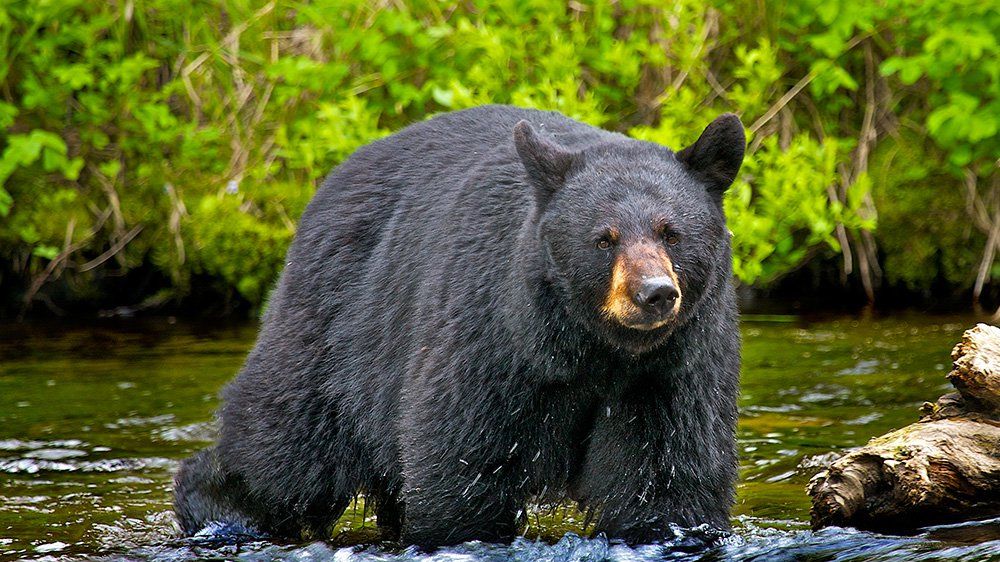Bear meat has been a staple on dinner tables in North America for centuries and was revered for its many uses. As commercially raised meat became more readily available, the prevalence of bear meat on the dinner table waned and the myths surrounding the edibility and the safety of consuming bear grew. Ask a handful of hunters about eating bear meat and you will likely get a number of wildly different responses, anything from “it’s inedible” and “it isn’t safe to eat,” to “it’s the best meat out there.” As a chef and a hunter that loves to eat bear meat, I am passionate about dispelling the myths that surround the consumption of this animal.
Of all the game meats that hunters consume, no other game eats a more varied diet than bears do. They are opportunistic predators and largely omnivorous, grazing on spring grasses or fall alpine berries. As a result, bear meat varies greatly in its flavor profile. Nowhere is this more evident than in a bear that has been gorging on spawning salmon, likely where the idea of bear meat being inedible first started. From a culinary standpoint, I would advise anyone getting into bear hunting to steer clear of bears feeding on salmon and focus on spring bears and alpine bears in the fall.
Bear in the wildPhoto: David Frame
Good bear meat can go toe-to-toe with any other wild game meat when prepared properly. The best bear meat I have ever eaten was from an inland, spring-time sow that was estimated to be over twenty years old. Bear meat is slightly darker in color than beef and the grain of the meat is coarser and a touch looser. All the bear meat I have tried has been very mild and somewhat sweet. There is a distinct (not off-putting) smell to the meat, the same way raw lamb meat has a unique smell. To ensure the best table fare, it is highly recommended to remove all the fat from the meat prior to freezing. If left on, some potentially off-putting flavors from the fat can migrate into the meat while frozen.
Cutting bear meat
Treat bear meat much like you would beef. The applications and preparations are very similar. One of my favorite ways to prepare it and a very easy introduction to bear meat, is to braise it in dishes like beef bourguignon, Polish hunter’s stew or Indian curry. Bear meat also shows very well as a roast or kebabs, but there are some food safety factors to discuss around this preparation, more on that below. Lastly, if you are interested in utilizing more of the animal I would highly suggest looking into the uses for rendered bear fat, aka bear grease.
Delicious ways to prepare bear meat.
Almost all bear meat is very likely to contain roundworms from the Trichinella family, which, when cooked improperly and consumed can lead to Trichinosis, a curable disease that can in very rare cases be fatal. These roundworms are so prevalent in bears that it is safer to assume that the meat is infected. Although many studies have been done around the type of Trichinella found in commercial pork, very little is known about the varieties of Trichinella found in wild game. Here is what we do know:
Freezing is not effective in killing all types of Trichinella.
All Trichinella is killed at 160℉ and for this reason, it is strongly recommended that all bear meat is cooked to that internal temperature.
When properly cooked, meat containing Trichinella is completely safe to eat.
There is a method of cooking called sous vide in which it is theoretically safe to eat bear meat medium-rare, but these waters are still murky and are better left for another article.
Bear season offers a great excuse to get out into the bush at a time when a lot of hunters aren’t in the field with a tag in their pocket. The icing on the cake is the fine table fare that bear provides when cared for and cooked properly. So if you have been mulling over the idea of going out for a bear this next season, I would highly suggest you give it a go.
Oxu24.com







































ŞƏRHLƏR